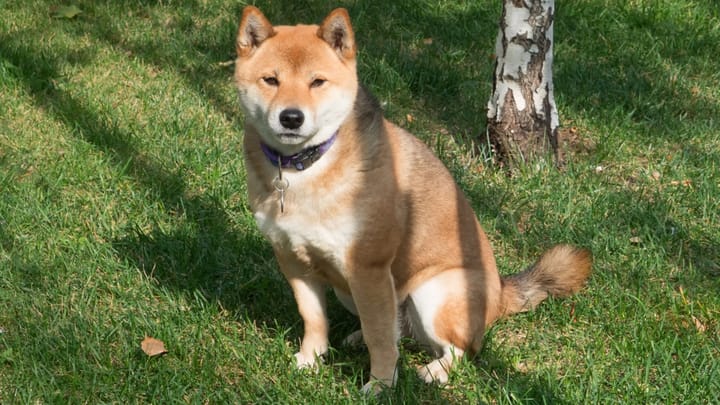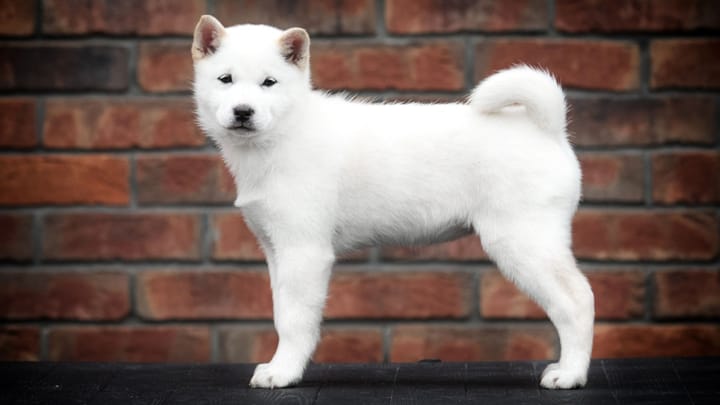Hokkaido
Other names : Hokkaido-Ken, Ainu-ken, Seta, Ainu dog, Dō-ken


This deeply fluffy cutie may look like a cuddle on legs, but he’s built for action. The Hokkaido’s affable, dignified expression and distinctive coat make him a common pet in his homeland of Japan, but he originally worked as a hunter of boars and even of the mighty bear, who he disarmed ‘playground-style’ by leaping on her back and biting her neck flesh until she gave up or retreated. Today, he is making solid inroads towards domestic life, although his playing style – as unconventional as his bear-baiting style – has marked him out to some as a risk. In fact, he’ll play nicely with humans and other dogs, although smaller creatures should beware that he’s still keen on a casual game of hunt-the-furry-thing.
|
Life expectancy |
The Hokkaido has a life expectancy of between 11 and 13 years |
|
Temperament |
|
|
Size |
Medium
|
|
Adult size |
Female
Between 18 and 19 in
Male
Between 19 and 20 in
|
|
Adult weight |
Female
Between 40 and 51 lb
Male
Between 44 and 55 lb
|
|
Coat colour
|
Black White Red |
|
Type of coat
|
Short Hard |
|
Eye colour
|
Brown
|
More details about the Hokkaido
Hokkaido: Origins and history
Named for his home island, the Hokkaido seems to have originated from the medium-sized Japanese dogs who migrated there nearly 1,000 years ago. Over the centuries, he has been a brave and loyal hunting colleague, but he became very rare by the early 20th century. Partly thanks to his appearance in animations and a series of commercials, the Hokkaido-Ken has enjoyed a renaissance in Japan in recent years; now, due to the proliferation of cute pics on the internet, he is ready to take over the world. Here’s to our Hokkaido-Ken overlords!
Physical characteristics of the Hokkaido
The Hokkaido-Ken is aesthetically notable for two main characteristics: his upturned, almost triangular eyes; and his puffed-up coat, giving him the look of an inflated wolf (if instead of air he was inflated with cuteness). His face is mid-length, and his wedge-shaped head works its way back to small triangular ears flanked by thick fur that avalanches down over his powerful neck. Beneath that deeply dreamy double-coat, his body is broad and muscular, adding to the sense that he could bear-hug as strongly as any of his long-vanquished ursine foes. But you really know they’ve made an effort with this dog because, although he’s already proven himself spectacular long before you reach his rear, the Hokkaido bum is decorated with a high, thick, sickle-shaped tail in perfect curved relief to the rest of his square-edged body.
FCI classification of the Hokkaido
-
Group 5 - Spitz and primitive types
-
Section 5 : Asian Spitz and related breeds
Hokkaido: Characteristics
Hokkaido: Behaviour
Training a Hokkaido
This is not an easy dog to lead, and is not recommended for novices. He needs to be trained from early on by an experienced master, who knows the peculiarities of the breed. Patience and determination must be the watchwords for this one.
Hokkaido: Lifestyle
Breed compatibility Hokkaido
Hokkaido: Purchase price
We do not have enough data to set an average price.
Looking after a dog of this size typically costs between £70 to £110 a month, including food, medical/insurance, and incidental expenses.
Hokkaido: Shedding
Heavy !
He will shed his undercoat twice a year.
Hokkaido: Grooming
Despite his well-groomed look, the Hokkaido-Ken requires little attention to keep him ship-shape; his skin and coat does the job with natural oils.
Hokkaido: Health
The life expectancy of a Hokkaido dog is approximately 12 years.
This is a strong and work-oriented dog.
This dog boasts moderate tolerance for heat, but caution should be exercised in times of heat wave.
Due to his double-coat, the Hokkaido-Ken is very well adapted to cold and snowy weather.
Negligible.
- Collie eye anomaly
- Hip dysplasia
- Luxating patella
- Heart murmurs
- Idiopathic seizures
- Anxiety
- Psychogenic polydipsia
- Pica





